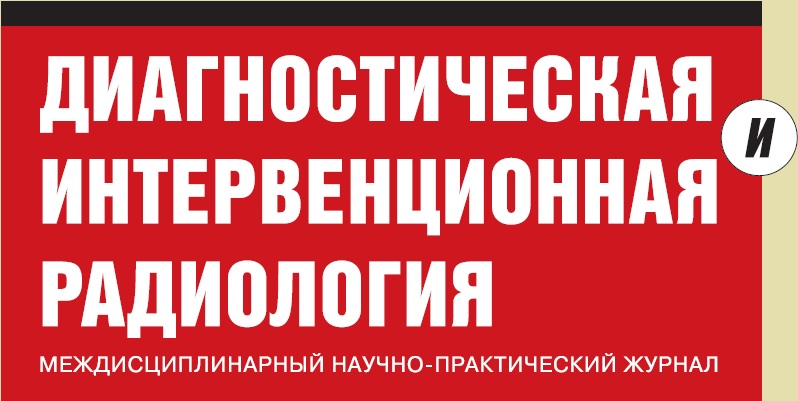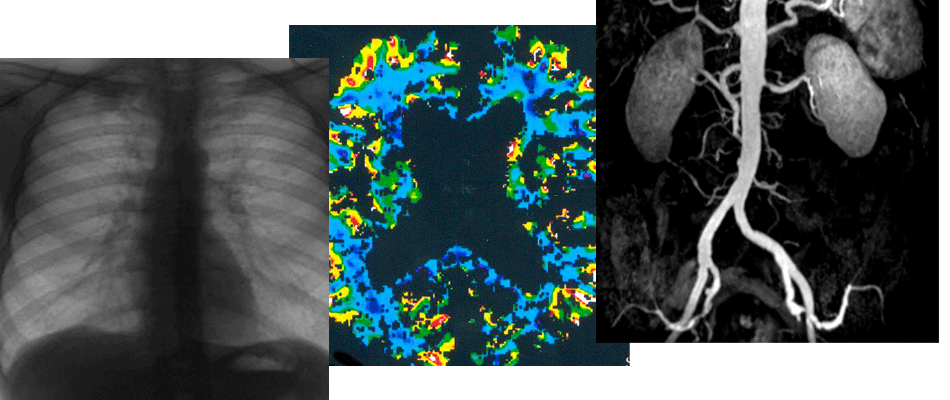|
ключевые слова:
|
|
авторы:
|
ключевые слова:
|
Аннотация: Цель. Оценить возможности КТ диагностики в выявлении саркопении у больных с опухолевыми и воспалительными заболеваниями поджелудочной железы. Материалы и методы. В исследование вошли 42 пациента с раком поджелудочной железы (ПЖ) и хроническим панкреатитом (ХП). 20 пациентов с верифицированным раком ПЖ (10 мужчин и 10 женщин от 47 до 82 лет) и 22 пациента с хроническим кальцифицирующим и/или псевдотуморозным панкреатитом (16 мужчин и 6 женщин от 29 до 63 лет). Проведена оценка КТ исследований для уточнения диагноза, оценки состояния ПЖ и стадирования процесса. Результаты. Саркопения на основании значений СМИ была выявлена у 14 (70%) больных из 20 пациентов с раком ПЖ, в том числе у 9 из 10 мужчин и 5 из 10 женщин. Анализ частоты осложнений в послеоперационном периоде не показал статистически значимых различий. Они отмечены у 11 (55%) пациентов из 20 больных, в том числе у 8 (57%) пациентов из 14 больных саркопенией. В то же время летальный исход отмечен только у пациентов с этим заболеванием (3 случая). Среди больных с хроническим панкреатитом саркопения была выявлена у 15 (68%) больных из 22 пациентов, в том числе у 13 из 16 мужчин и у 2 из 6 женщин. Периоперационных осложнений и летальности в данной группе не было. Выводы. Компьютерная томография как стандартный метод диагностики опухолевых и воспалительных заболеваний ПЖ позволяет путем расчета СМИ оценить степень саркопении. По полученным результатам частота этого заболевания у пациентов с резектабельным раком ПЖ и осложненными формами хронического панкреатита достигает 70%. Применение КТ открывает новые возможности для изучения метаболических расстройств у больных раком ПЖ и тяжелым хроническим панкреатитом. Список литературы 1. Заводчиков А.А., Башкина А.С., Лаврухина А.А. и др. Пути противодействия саркопении. Лечебная физкультура и спортивная медицина. 2011; 50-59. 2. Morley J.E., Thomas D.R., Wilson M.M. Cachexia: pathophysiology and clinical relevance. Am. J. Clin. Nutr. 2006; 83: 735-743. 3. Tan B.H., Fearon K.C. Cachexia. Prevalence and impact in medicine. Curr. Opin. Clin. Nutr. Metab. 2008; 11: 400-407. 4. Klaude M. et al. Proteasome proteolytic activity in skeletal muscle is increased in patients with sepsis. London. Clin. Sci. 2007; 112: 499-450. 5. Dodson S. et al. Muscle wasting in cancer cachexia. Clinical implications, diagnosis and emerging treatment strategies. Annu. Rev. Med. 2010; 62 (8): 1-15. 6. Prado C.M. et al. Prevalence and clinical implications of sarcopenic obesity in patients with solid tumours of the respiratory and gastrointestinal tracts. A population-based study. Lancet. Oncol. 2008; 9: 629-635. 7. Baumgartner R.N. et al: Epidemiology of sarcopenia among the elderly in New Mexico. Am. J. Epidemiol. 1998; 147: 755-763. 8. Janssen I., Heymsfield S.B., Ross R. Low relative skeletal muscle mass (sarcopenia) in older persons is associated with functional impairment and physical disability. J. Am. Geriatr. Soc. 2002; 50: 889-896. 9. Pichard C. et al. Nutritional assessment. Lean body mass depletion at hospital admission is associated with an increased length of stay. Am. J. Clin. Nutr. 2004; 79: 613-618. 10. Cosqueric G. et al: Sarcopenia is predictive of nosocomial infection in care of the elderly. Br. J. Nutr. 2006; 96: 895-901. 11. Metter E.J. et al. Skeletal muscle strength as a predictor of all-cause mortality in healthy men. J. Gerontol. a Biol. Sci. Med. Sci. 2002; 57: 359-365. 12. Prado C.M. et al. Body composition as an independent determinant of 5-fluorouracil-based chemotherapy toxicity. Cli. Cancer. Res. 2007; 13: 3264-3268. 13. Heymsfield S.B. et al. Human body composition. Advances in models and methods. Ann. Rev. Nutr. 1997; 17: 527-558. 14. Witt H. et al. Chronic Pancreatitis. Challenges and advances in pathogenesis, genetics, diagnosis, and therapy. Gastroenterology. 2007; 132 (4): 1557-1573. 15. Uomo G., Gallucci F., Rabitti P.G. Anorexia-cachexia syndrome in pancreatic cancer: recent development in research and management. JOP. 2006; 7: 157-162. 16. Zamboni M. et al. Sarcopenic obesity. A new category of obesity in the elderly. Nutr. Metab. Cardiovasc. Dis. 2008; 18: 388-395. 17. Roubenoff R. Sarcopenic obesity. Does muscle loss cause fat gain? Lessons from rheumatoid arthritis and osteoarthritis. Ann. N.-Y. Acad. Sci. 2000; 904: 553-557. 18. Cruz-Jentoft A.J. et al. Sarcopenia. European consensus on definition and diagnosis. Age and Aging. 2010; 39: 412-423. 19. Baracos V.E. et al. Body composition in patients with non-small cell lung cancer. A contemporary view of cancer cachexia with the use of computed tomography image analysis. Am. J. Clin. Nutr. 2010; 91: 1133-1137. 20. Antoun S. et al. Low body mass index and sarcopenia associated with dose-limiting toxicity of sorafenib in patients with renal cell carcinoma. Ann. of Oncology. 2010; 21: 1594-1598. 21. Mitsiopoulos N. et al. Cadaver validation of skeletal muscle measurement by magnetic resonance imaging and computerized tomography. J. Appl. Physiol. 1998; 85: 115-22. 22. Shen W. et al. Visceral adipose tissue. Relations between single-slice areas and total volume. Am. J. Clin. Nutr. 2004; 80: 271-278. 23. Shen W. et al. Total body skeletal muscle and adipose tissue volumes. Estimation from a single abdominal cross-sectional image. J. Appl. Physiol. 2004; 7: 2333-2338. 24. Mourtzakis M. et al. A practical and precise approach to quantification of body composition in cancer patients using computed tomography images acquired during routine care. Appl. Physiol. Nutr. Metab. 2008; 33: 997-1006. 25. Eisenhauer E.A. et al. New response evaluation criteria in solid tumours. Revised RECIST guideline (version 1.1). Europ. J.of Cancer. 2009, 45: 228-247. 26. Bozzetti F. Screening the nutritional status in oncology. A preliminary report on 1,000 out-patients. Support Care Cancer. 2009; 17:279-284. 27. Bachmann J. et al. Cachexia worsens prognosis in patients with resectable pancreatic cancer. J. Gastrointest. Surg. 2008; 12: 1193-1201. 28. Tan B.H.L. et al. Sarcopenia in an overweight or obese patient is an adverse prognostic factor in pancreatic cancer. Clin. Cancer. Res. 2009; 15 (22): 6973-6979. 29. Beger H.G. et al. Treatment of pancreatic cancer. Challenge of the facts. World. J. Surg. 2003; 27: 1075-1084. 30. Beger H.G. et al. Diseases of the pancreas. Current surgical therapy. Berlin. Springer-Verlag Heidelberg. 2008; 301-311.








